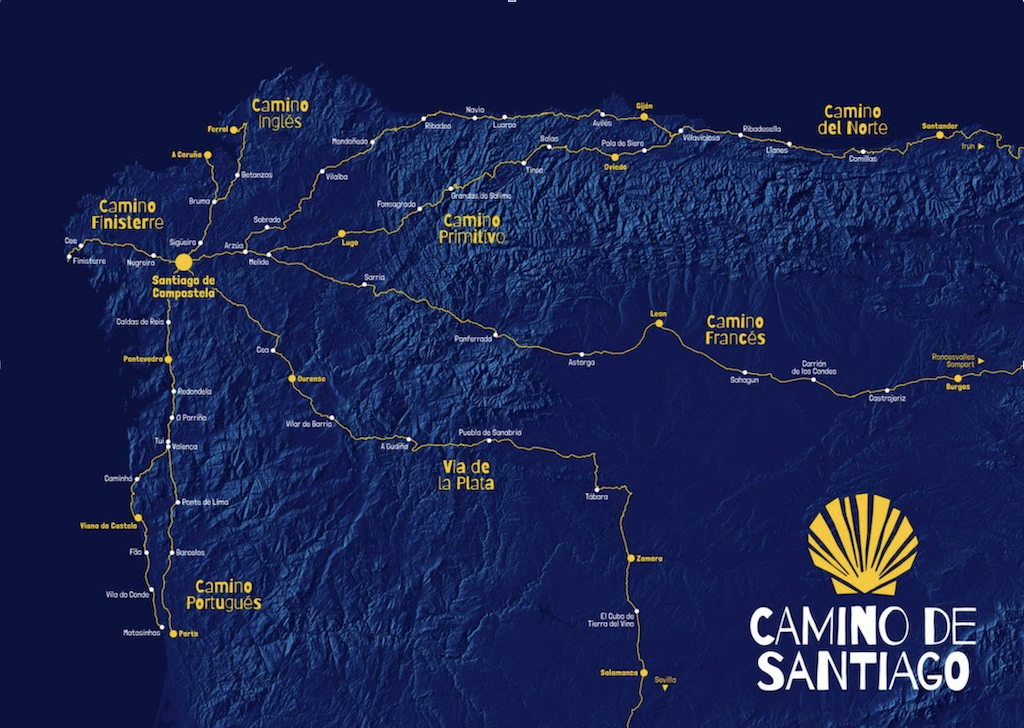
The Camino de Santiago (the Way of St. James) is a large network of ancient pilgrim routes stretching across Europe and coming together at the tomb of St. James (Santiago in Spanish) in Santiago de Compostela in north-west Spain.

The Way of St James became a major pilgrimage route of medieval Christianity from the 10th century onwards.
In the 15th century, it was actually considered one of the three main pilgrimages of Christianity (including Rome and Jerusalem).
Legend holds that St James’s remains were carried by boat from Jerusalem to northern Spain, where he was buried in what is now the city of Santiago de Compostela.
The most popular route (which gets very crowded in mid-summer) is the Camino Frances which stretches 780 km (nearly 500 miles) from St. Jean-Pied-du-Port near Biarritz in France to Santiago
Some people set out on the Camino for spiritual reasons; many others find spiritual reasons along the Way as they meet other pilgrims, attend pilgrim masses in churches and monasteries and cathedrals, and see the large infrastructure of buildings provided for pilgrims over many centuries.
“Hope is like a road in the country; there was never a road, but when many people walk on it, the road comes into existence.” (Lin Yutang)

